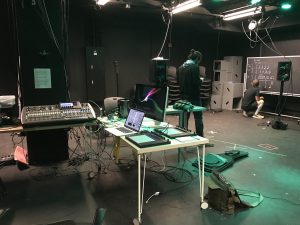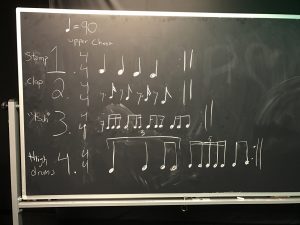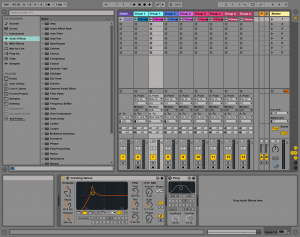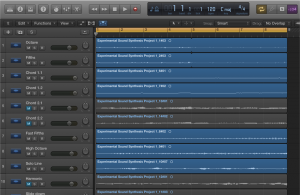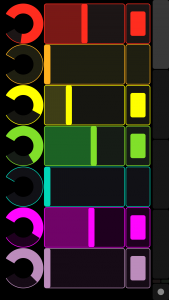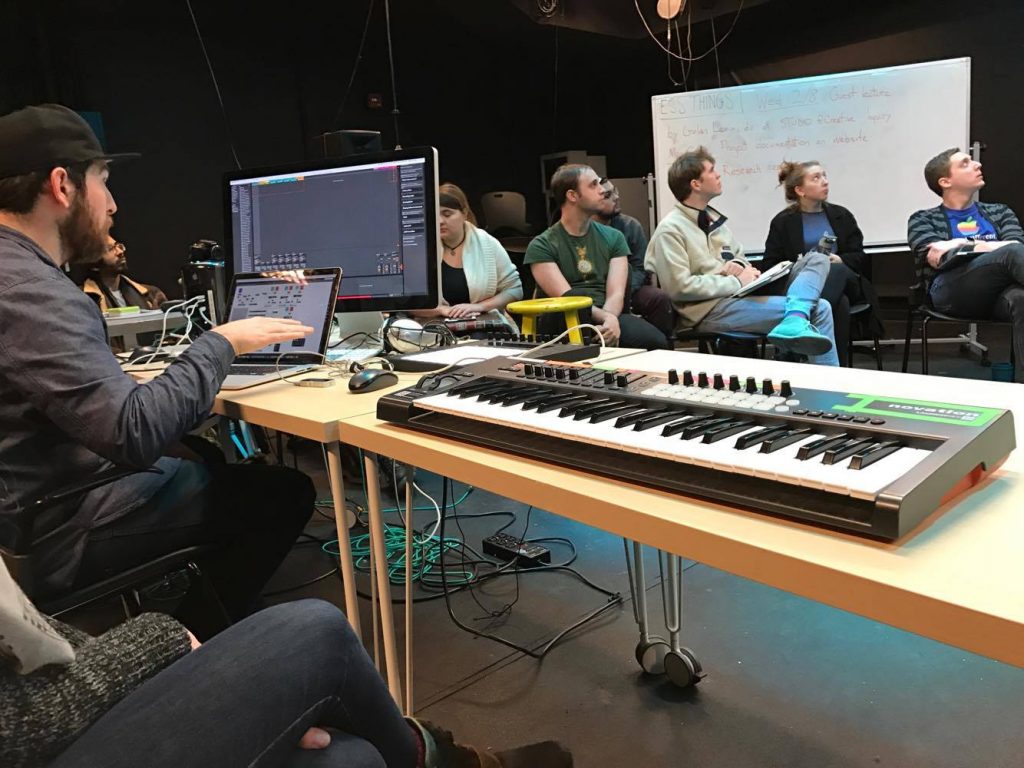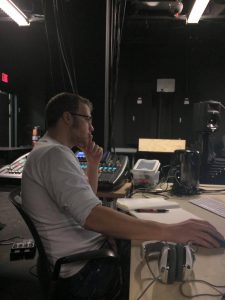|
<pre><code> |
|
----------begin_max5_patcher---------- |
|
11853.3oc6ct1aiijc2+0c+oPvX.Rxfdsq6E4hj.LalM69hmAOOHS1WDLHvf |
|
Vh1laKKpkjpurAY9r+TEoHkntXWjsX4p64+foa6V7hN7Tm51+5GO0+yaeyU2 |
|
k+ozxql86m8Kydya9ed6adS8GY+f2r8e+lqdJ4SyWlTVeZWsJ8i428Wu5cMG |
|
pJ8SU0ebQ9lpzY2vuorJoJU2d7UadJa0xzp5qks8CyVTeIlayuipE6cpl6wg |
|
maY0mWlVe5smWyIU840oMls4.l+L6+d6gWmTM+wrUObaQ57plyPPnrqUJkVD |
|
8tYBk9ZES9tYTZ70j2MiwtlL6+1ds+uu8s1+5cWRGgxcGAe5cD7HI4ZNmyjL |
|
e6Hjt6HndvQnhEuRQDB2cDDO3Hj7nWIGA2YGgJ1CNBdD+UxQvb2QD4AGAiEc |
|
MyzHQr2cDT2cDZO3HHZ90RSHg4wWX9Uxj4EVO69jEoEt+zqN8SO08m9xrGVk |
|
rz8dMkTg8IWQ287u+UZL9lm5sO1u4p6yVl9gzhxr7U6YZu4pj0q26ieydWh0 |
|
W8WyquQ5208QYqZ9Hd2GUj9grCusl6agw9qLF+lhlG8OE05kr2lbi+c0lr5q |
|
o4CMkZus8F19HqUJ6ymjz7vJH1eHhH6dbMkvOrLe96SqKNHseX95zUYqVWjV |
|
ltxDIu055N7hz6S1rr516yWUUl82qMPiy8jG+9j4om8hWk7TyS2OTjYJ9ZOk |
|
GJxVjuxZD8701Ot8q6WlQk0gvx8eXpOiUIqOwEahzL9kybPa00Mk2kTXKJtq |
|
IXi0dvp77k8OT20sL89psGdc1pUG3EqxWe9CVj8viOy0dWt4fO8b265iTd6l |
|
UMG8VSsxpaKS9PeucUxxkaql1+1+ojUYOYZjpJqoHfQ5NX5pDyC5ikyKxWtr |
|
2yayQ9vINxBST77zOlsn5w5un8CFLmd151fnq5JkWj8PZYU+OqJ4gx9exQU9 |
|
Mezl61VK81pzmVuz7Tz+D5MIf8qRteCZ897CZXqt8ptpaG1FFYuCrW6X5Ctf |
|
iaI6LOPtzh14ZUyzbdcSXZ00bsokcdccb99UwsW477mdxTUt4qs8iqaseaaG |
|
izQ0X1m0SQOsmRddOE4E8TmvIHI7q0loAnUlV4HrVOfG8CiJfgeQCXdwPENu |
|
t2.FM5UvA0anB8GtP18y9tL5+LcV0ioqlcWxpGFZ7Dkp8sqjYGSYc.GmpsyA |
|
kKDldiZ5hc2.p7k26e8e4Kx8o7q6SDI5pu128o8s6qZ1cyta3NLw4cXrg6vZ |
|
Jz19yWz4YF5psgdyX6Z8aSja6tMlwfrZ3NG5EMZZPNEAsyovpGzq8uCAmBI9 |
|
UvoDUOKOtPN0NkKdELh9UrB1V2llN0UvdJsrL4gzS52nDB4rtM14baBO2Ptt |
|
dHEBRiGK1+dog6hXd1EIXc80s0OwhssU4U+zfCkhi8rapV+fI1C8LMSsLaU5 |
|
uZl15f8SxKZCUam0m6MUsafTh35wdph78Pn99ecvNMwqwTkkQjqihiiI1EKJ |
|
Jttwcs3EC11otjMF4LxJT+0YO9ockk4aJl2ZtsUul0elWKRKqxV0I11urK95 |
|
fS7wrEKRWc37JWjUZ0loQkHmJ3GrMKc0lMEuynggMKbzlCG2rdHd4vvj4NZx |
|
0yS+qNaVEL17o7emypoAjUqb0pIwAjU6ZSGwglQScxUKBHql5bXc.Y0jXmCq |
|
0AjUq+ZLBg3bCe142ELVsXHixiFHFMy2CMc2HrqGv+YFhc2ZE+yUoeHcOE3Z |
|
WQ4S+.t+xLaL7eX0hjkoy9o7U48mvv7koIEyyW1r77+hYpfQJlVXlYf42zDY |
|
TTyuEI3T6u0+A+tGtOa4xtK+MGYGl4KscBKW8PQxhL6Zr7t8NZuuYVLgFqre |
|
KbRbDQz7alOx7MS6+Mu8JosWpRRhqsTk8+zM+VyywouR1n9RMSNc6pjq2sTu |
|
MwaE4qyK5PF3ZdbuqaSUd2y+9gC63WnsPqEbfeY1gqP09kQbYrnt7HhGYmXm |
|
cJdBFUcjMeUx74luzdWs6NqqRWl9zgWtTQ3z5qRpIlu05qmPIpS7se2C8tTt |
|
VQipuTAIlGU6rEBIU09U+1icKlpxEFS3TSJ9pmLw+Y66POUSAc0fZlL+eX4l |
|
zeG005Qmv8Yd3UhFulTD238iseD0eOD+ohzzUeQOEj5BPqX.b6uQU15896A3 |
|
+Jc4x7O59Sv9L27K0T2HiIjnWJTOhIaBU0QznlFvjwRwkKba68n8FbkkDkE2 |
|
1PcysIUUEY2sopos884pZPzg7vx76RVtk8iN+3ygJxNdRd6tNcdknbS5CJ25 |
|
gDsjnAkafxMP4FnbCTtAJ2.kafxMP4FnbCTtAJ2.kafxMP4FnbCTtAJ2.kaf |
|
xMP4FnbCTtAJ2.kafxMP4FnbCTtAJ2.kafxMP4FnbCTtAJ2.kafxMmnbS3EJ |
|
21OeWBJ2.kafxMP4FnbCTtAJ2.kafxMP4FnbCTtAJ2.kafxMP4FnbCTtAJ2. |
|
kafxMP4FnbCTtAJ2.kafxMP4FnbCTtAJ2.kafxMP4FnbCTtAJ2.katR4F2KT |
|
ts+lYLnbCTtAJ2.kafxMP4FnbCTtAJ2.kafxMP4FnbCTtAJ2.kafxMP4FnbC |
|
TtAJ2.kafxMP4FnbCTtAJ2.kafxMP4FnbCTtAJ2.kafxMP4FnbCTt4JkaDuP |
|
4FOhCJ2.kafxMP4FnbCTtAJ2.kafxMP4FnbCTtAJ2.kafxMP4FnbCTtAJ2.k |
|
afxMP4FnbCTtAJ2.kafxMP4FnbCTtAJ2.kafxMP4FnbCTtAJ2.kaCkxMYjWn |
|
biwklFlT1FR.ja.xM.4FfbCPtAH2.ja.xM.4FfbCPtAH2.ja.xM.4FfbCPtA |
|
H2.ja.xM.4FfbCPtAH2.ja.xM.4FfbCPtAH2.ja.xM.4FfbCPtAH2.ja.xMW |
|
gbS4EH2HZNfbCPtAH2.ja.xM.4FfbCPtAH2.ja.xM.4FfbCPtAH2.ja.xM.4 |
|
FfbCPtAH2.ja.xM.4FfbCPtAH2.ja.xM.4FfbCPtAH2.ja.xM.4Ffb62NPts |
|
dYxmWlUV8qmjmM5o3YSbZd1jClms2c5ey9mEYysdsjhO+rTuIHlXj1MvTAKt |
|
AZpiV7+qVjTkbXgy7kYqOSuwVd35JA9oj4YqpxKeb1e9G+827WJSKJuortW5 |
|
2aBgVcyOlOeis0yxa9i+7Oey+4m+GJmYLv7hEFSs7F80eL4C6EbYu0uOaUi+ |
|
LYyhrb6mr2IrLOeceoBMcJrpx7EbqEjqyLRm7hrGLChYowtenARos09upJa9 |
|
6K6OZ.KUTkUEoF24o5CxxeW2RKUlM+.sGyLWV4iY2usH3v9BpOt4w2VH0Mjp |
|
9mRei8oxNys2YUtNsYTUG+czdCr.Rk21VwQW+xMEs7ec7c+9baKSM04161b3 |
|
IU7Thsslm6owVC5Yt3S+DT6Xq1rJypCdyJoz+D9aaRVlU84CJGN43K8ZkeV3 |
|
T4mGYpoa5XiIYAZkeEp7iJ+e6T4mEP87yUwhvtmeIp7iJ+eCU4mFPU9k7nvt |
|
xu.U9Qk+ucp72gfdHT4mGwC6J+bT4GU9+FpxOOfp7yXQ1WNEdbnV4mgJ+nx+ |
|
2NU96d0NBgJ+68NtGj08ontOp6Gp086+FTriv8FHYlwnylmTTkVlkrx3.281 |
|
B7xY3Bg7KNCW7r06o0uWWQJtEkcZLs+6.vE1MPFuaP4E2.O1CtAZ73cCZu3F |
|
nRe3FhFuaHxGtAs442CtA83cCwdwMnz9vMnFsaPR7haP3ilHoxw6FndwMvnW |
|
q8fePL9ZEbe3GTwZu3G3i2Ov7hevLsAe3GXi2O3k5EJQrW7CeAijzKMSpXxK |
|
he3LIHtBiMkN6F1M0Sgi67CO6LiejMfG928BN.FSWmRkDlNLMtAiOfFOE9fg |
|
lj7XZejj7Xwz54IK2FGfDjGRPdHA4gDjGRPdHA4gDjGRPdHA4gDjGRPdHA4g |
|
DjGRPdHA4gDjGRPdHA4gDjGRPdHA4gDjGRPdHA4gDjGRPdHA4gDjGRPdHA4g |
|
DjGRPdHA4gDjGRPdHA4gDjG1EXeI.2h7BfaZo..tA.2.fa.vM.3F.bC.tA.2 |
|
.fa.vM.3F.bC.tA.2.fa.vM.3F.bC.tA.2.fa.vM.3F.bC.tA.2.fa.vM.3F |
|
.bC.tA.2.fa.vM.3F.bC.tA.2FBfawdAvMYSN6C.tA.2.fa.vM.3F.bC.tA. |
|
2.fa.vM.3F.bC.tA.2.fa.vM.3F.bC.tA.2.fa.vM.3F.bC.tA.2.fa.vM.3 |
|
F.bC.tA.2.fa.vM.3F.bC.tA.2bDvMNwK.tI3b.3F.bC.tA.2.fa.vM.3F.b |
|
C.tA.2.fa.vM.3F.bC.tA.2.fa.vM.3F.bC.tA.2.fa.vM.3F.bC.tA.2.fa |
|
.vM.3F.bC.tA.2.fa.vM.3F.baH.tQ8BfaLs72N.tIz0Ok7FXF.fa.vM.3F. |
|
bC.tA.2.fa.vM.3F.bC.tA.2.fa.vM.3F.bC.tA.2.fa.vM.3F.bC.tA.2.f |
|
a.vM.3F.bC.tA.2.fa.vM.3F.bC.tA.2.fa0ebQt44Y1MrarvCkxbGzM1oAc |
|
i4NnaV8AedL2nLhcAp41l2DJ80Jlsjldf.8uRj9w8Boe66BP9rC39Ab+.te. |
|
2Of6Gv8C39Ab+.te.2Of6Gv8C39Ab+.te.2Of6Gv8C39Ab+.te.2Of6Gv8C3 |
|
9Ab+.te.2Of6Gv8C39Ab+.te.2Of6Gv8C39Ui6G0cZ2DSOte1VsqkSUwCKR+ |
|
j9fzu1md.4Gf7CP9AH+.je.xO.4Gf7CP9AH+.je.xO.4Gf7CP9AH+.je.xO. |
|
4Gf7CP9AH+.je.xO.4Gf7CP9AH+.je.xO.4Gf7CP9AH+.je.xO.4Gf7qFxOs |
|
6fto7PN8Kl1v5ktVN0IBwu9d.k6d.sG7.Zov2d.o6dfHO3AjwaA8bZSoi88A |
|
B28AwdvGH37KpOX8xjOuLqr5WO4iI8DOlryjBOkClq02c5ey9mEYyssflT7Y |
|
2bGr3F1IOhAnqVjTkbXazyWls9LCJ2hEaWCw+Tx7rUU4kON6O+i+9a9KkoEk |
|
lfB6f0euomjU27i4y2XGDU4M+we9muoYX7+CkyL1WdwBikVdyOLOeiYpFym8 |
|
m1jUkTL6O8z0eL4C60wi8668YqZ7uIaVjka+j8Ngk44q6uLBlALtpx7sdac7 |
|
4o6TMuH6AyDbVZdXdnAfwsiL3Jiw79x9yTvRLYYUQpw8dpwmZYysaYmKylev |
|
5RjYtrxGytuEH4CFmX8wM9CagV2zs5eJ8M1mJ6L2dmU45zlYbc72Q6MvBOYd |
|
63HN55WtonkMziu62maG0RS+w6caN7jJdJwNNjm6owVi5Yt3S+DT6Xq1rJyt |
|
FYMqxZ+S3usIYYV0mOnb3jy8b7CLXDMFPBnFC1t81GrMFz0FvrenXMZG.sC7 |
|
sS6.zn.pcf1QJGpsCX0paY9CaRQSAnofu8ZJPEPMEzJaP32TvOVrAyM.MD7s |
|
TCAh.pgfVsiB+FB9CFONZH.MD7MTCAgjhg81bfBdkB9c+3Sy92dz7wnEAzhv |
|
2PsHDPxF1k+PBeYCQKAnkfftkfyl5bVmkd6paWm7dWWM0H8Wb1y4Yq0yIQQc |
|
iCPWWyOl7MctyQxpe9nwLj6bPtyA4NmINkvntvoDFJqIYmvnesjMX77qtMMR |
|
ZesGaV6muF7Od981da.zqh+4YdYaS+z5hYe28zu+ej887qoB5+zPqooidUBz |
|
nr5WL4WgLjiYXTl1TGw61s1yYUHJuNMSPU0wbMzY32WKYargSu6GZcv7Bqnc |
|
8UCJbdONc80B5DEGuVlLaHAF3kBBuTP3kBBuTP3kBBuTPei9RA0OYKsavlMc |
|
bNiJmsNeYhYn5zYeGyYU7h7nJdTRiHPJ1D9Vgvu4ojGn1et9wjxyjJz4mvSb |
|
lWND9.e4Pd2P7HxFGhVMM4C8AKpaLcZCGDTk1l9nfntPTWHpKD0Eh5BQcgnt |
|
PTWHpKD0Eh5BQcgntPTWHpKD0Eh5BQcQldpQKScmVlZW0xLl4GsL6ImWqVlw |
|
ghVl7IVZ63HnkIzxDZYBsLgVlPKSnkIzxDZYBsLgVlPKSnkIzxDZYBsLgVlP |
|
KSnk4dZYp5zxT4rVlBOwk49x4EbbYJmXsLM8iAsLgVlPKSnkIzxDZYBsLgVl |
|
PKSnkIzxDZYBsLgVlPKSnkIzxDZYBsL2okorSKSoyZYp7jVl6KmWvok4Tm3P |
|
ULnkIzxDZYBsLgVlPKSnkIzxDZYBsLgVlPKSnkIzxDZYBsLgVlPKSnk4dZYJ |
|
5zxT3rVlQdRKy8kyK3zxLdh0xTHHXSPBZYBsLgVlPKSnkIzxDZYBsLgVlPKS |
|
nkIzxDZYBsLgVlPKSnkIzxbmVl7NsL4tpkIkP7jXlBgHX27enjId2+gyTJnl |
|
ITyDpYB0LgZlPMSnlITyDpYB0LgZlPMSnlITyDpYB0LgZlPMSrkt2rktyniY |
|
KcmRXdbS79Bsmt+RdBx37D9bK.xOdBZ737DBOl.Q8jmHZbdBoGS+.dxSnGmm |
|
P4Q3k8jmPMNOg1iK7wExS3vJgw5VILl6qDluv5eeWRnsRXQSbqkTyXlrsQvz |
|
JrPXXgvvBggEBCKDFVHLrPXXgvvBggEBCKDFVHLrPXXgvvBggEBCKDFVHrey |
|
uPXiRo+HoGEwqUTWobBE0kYE0kZ+YsntTWE0MxSoc5ddjPSSW4DmpVL8sKwK |
|
2.zzEZ5BMcgltPSWnoKzzEZ5BMcgltPSWnoKzzEZ5BMcgltPSWjpV1okotSK |
|
SsqZYp7TlZombdglVlpINQsvzLnkIzxDZYBsLgVlPKSnkIzxDZYBsLgVlPKS |
|
nkIzxDZYBsLgVlPKSnk4dZYp5zxT4rVlLOok49x4EbZYNwuq8LofAsLgVlPK |
|
SnkIzxDZYBsLgVlPKSnkIzxDZYBsLgVlPKSnkIzxDZYBsL2okorSKSoyZY5o |
|
2w7dx4EbZYNw4QVFWAsLgVlPKSnkIzxDZYBsLgVlPKSnkIzxDZYBsLgVlPKS |
|
nkIzxDZYBsL2SKSQmVlBm0xzS6AR8jyKzzxTSlXsLo5c6cdPKSnkIzxDZYBs |
|
LgVlPKSnkIzxDZYBsLgVlPKSnkIzxDZYBsLgVlPKyG3cZYxcUKSM0SZYZJt6 |
|
jyK3zxjMwZYRHbretCsLgVlPKSnkIzxDZYBsLgVlPKSnkIzxDZYBsLgVlPKS |
|
nkIzxD6m6M6m6TwX1P20bOtCd2tgtqXeQZX9RNB9nbDROt8+3IGAaTNBsGyc |
|
ndxQPGkiHxiId.O4HHixQD6Qpk8iiHdL9gHethGs9AobJVum8W.LV2BfwbcA |
|
vh3dZAv12iDZK.lTMsgCTEO119.V.Lr.XXAvvBfgE.CK.FV.Lr.XXAvvBfgE |
|
.CK.FV.Lr.XXAvvBfgE.CK.Ff4+FpUKSs8m0ZYpcUKSo1OZY1SNuPSKSwDKw |
|
OUHgVlPKSnkIzxDZYBsLgVlPKSnkIzxDZYBsLgVlPKSnkIzxDZYBsLgVl6ok |
|
opSKSkyZYJ8jVl6KmWnokIehekFnlmZnkIzxDZYBsLgVlPKSnkIzxDZYBsLg |
|
VlPKSnkIzxDZYBsLgVlPKSnk4NsLkcZYJcUKStxSZYtubdAmVlS7FFGkDCsL |
|
gVlPKSnkIzxDZYBsLgVlPKSnkIzxDZYBsLgVlPKSnkIzxDZYBsL2SKSQmVlB |
|
m0xj4IsL2WNuPSKS1DmXgioTrewAoLgTlPJSHkIjxDRYBoLgTlPJSHkIjxDR |
|
YBoLgTlPJSHkIjxDRYtSJSdmTlbWkxjE4GoLioxfcm+gMw67OZtFJYBkLgRl |
|
PISnjITxDJYBkLgRlPISnjITxDJYBkLgRlPISnjITxDJYtUISqpHmQAySod2 |
|
YRRlrApf4yBhIMhU2lFyzRjPUOuXJMdZzu79jEoEN+zK9h0trL6gUIKe9mec |
|
j1NQDQT8.qab.eyJeoV0L8Uh.xWB4Kg7kSq1TWVgBNnwry0flR0nPfVYF4nz |
|
6hTMNcdkWXcdkDd25RoHruVDyj6Wkk37F0voQgkZlY2O66xn+yzYUOltZ1cl |
|
IPNz3IJU6aWIq60YwLWmqsSQPHdUD1rw68u9u7E49T908IhDc0W669z918UM |
|
6tY2MbG1yrNMrg6vZJz19yWz4QE1QvxMisq0uMQtMyzxpxWMbmC8hFMMHmhf |
|
14TX0C5092gfSgD+J3Th30swKjSsS4hWAineEqfs0sooScErmRKKSdH8j9MJ |
|
gPF5ZUQIdd8iEMnOIHMdrX+6kFtKxyKgrPv55qaqehEaaqxq9oAGJEG6Y2Ts |
|
9ASrG5YZlxtJX+5HVd3X4Esgpsy5y8lp1MPJQCKdpHeODpu+WGrSS7ZLUYYj |
|
cIfhqWNBQTbci6ZwKFrMIqwts5kSKkpM9JPV82SXJmwlEACW.wttJ6giaVOD |
|
ubXXxbGM454o+UmMGNHibJ+24rZZ.Y0JWsZRb.Y0t1zQbnYzTmb0h.xpoNGV |
|
GPVMI14vZc.Y05uFiPHN2vGgEPVsXHixiFHFMy2CMET9AJ+.kefxOP4Gn76q |
|
GJ+FJeabuv2lhKAeafuMv2F3aC7sA91.eafuMv2F3aC7sA91.eafuMv2F3aC |
|
7sA91.eafuMv2F3aC7sA91.eafuMv2F3aC7sA91.eafuMv2F3aC7sA91.eaf |
|
usAv2FyK7sYW7Bv2F3aC7sA91.eafuMv2F3aC7sA91.eafuMv2F3aC7sA91. |
|
eafuMv2F3aC7sA91.eafuMv2F3aC7sA91.eafuMv2F3aC7sA91.eafuMv2F3 |
|
ayc91HdguMNmB91.eafuMv2F3aC7sA91.eafuMv2F3aC7sA91.eafuMv2F3a |
|
C7sA91.eafuMv2F3aC7sA91.eafuMv2F3aC7sA91.eafuMv2F3aC7sA91.ea |
|
ty2FM1K7sQiX0slwT+VAxMgtdMs3M.M.H2.ja.xM.4FfbCPtAH2.ja.xM.4F |
|
fbCPtAH2.ja.xM.4FfbCPtAH2.ja.xM.4FfbCPtAH2.ja.xM.4FfbCPtAH2. |
|
ja.xM.4FfbCPtAH2p+3hbyyyran2XgGJk4LrapSC6FycX2rxC97ntQX55T4V |
|
CeaT5ABy+5P4mzKT909nGwZ.hA4wNf3GP7CH9AD+.he.wOf3GP7CH9AD+.he |
|
.wOf3GP7CH9AD+.he.wOf3GP7CH9AD+.he.wOf3GP7CH9AD+.he.wOf3GP7C |
|
H9AD+.he.wueqi3G0YR2DSOheQZ4zS32lEqMeioYeHcVzt0p3jKuSume1WLo |
|
eO6yNmnpEbmaaYORyBGFG09.ww1hdP3HHbDDNBBGAgifvQP3HHbDDNBBGAgi |
|
fvQP3HHbDDNBBGAgifvQP3HHbDDNBBGAgifvQP3HHbDDNBBGAgifvQP3HHbD |
|
DNBBGAgifvQP3HHbrgvQsqbtwnDOjEC0QdHKF12CnbeOKNxCd.EW5aOfzYOP |
|
jOxjk10w5x4A5stmuLGqQ7uXdN6o.9oixq0vkWqgqntSbaepGtFmC7As+xnr |
|
qrtYjxyzyVmuLoX12Qm8ctm4R05okqWS3dbGQJTxVzHkeQk3ufiPMNGwDC3L |
|
UH8siPNJGgZpcDVj.uvNh0KS97xrxpe04lATzS+TJGLV2u6z+l8OKxlaG+PR |
|
wmcqSQVbiy3HB3tZQRUxgiPY9xr0mYJoVnv6FFxOkLOaUUd4iy9y+3u+l+RY |
|
ZQooaA6TUeuYbTqt4Gy+3pk4IKJu4O9y+7M+rYvYy9+XlV90eL4C6MxJ6s78 |
|
YqZbgIaVjka+j8Ngk44q6uNYlYDspxLRsaq6D5ziZLuH6AyL3WZr2GZHzc6P |
|
eupJa96K6OUXKRvkUEoFO3ol.lE97tlnKylevBukYtrxGytu0qevDgpO977B |
|
a4RmdB8Ok9F6SkclauypbcZijBG+czdCrzAm2Vc3nqe4lhV3mO9teetcX4MC |
|
3buaygmTwSI1AZ+bOM1JMOyEe5mfZGa0lUY1t.avHn+I721jrLq5yGTNbRwU |
|
F+HeGd8cYb.UeucHfgP88+uyqLSHBU1Qk8ugprqCnJ6sy1IDpr+myd3wYnFO |
|
pw+MWMdY.UimpiClZ7+6IkUy92M0JdrD03QM9PsFuSxXJb+k02Cus9TNmdAk |
|
w7EzxQLFsbhISrTNjXkm0zhOF+PDcZ8CwTZGsy9wMvFkaXhCGzb8k1M7RsK7 |
|
TxCL6OW+XR4Y1ut3mHkNblU4fOvlGd2.bHMNBZy6kxn8GU4O7PWmzu3vhzcM |
|
CtNovL9gpzhaadS42iDlwGLjY6S4Yd7Y5Xgs4g5b5AmRN6K60TO7PUHI9Sa2 |
|
FSynCe4ADhwBhwB9s0r+Tgzj+Z2qBekpd+u8XdwBSAKC0vQM7ucpgyCmZ3so |
|
pqW4J3TTAGUv+ZUNm5oq4btWT5A0bjxcuM7bsOHyyL0U28.b+5An0ur6zlzy |
|
WfjAJkSLWRLIOpa1pMovFK30eogAkKyNWxl7TOjzIcF66b.cYGw1WRhqt2zG |
|
Sk4JVuoZ+65oj6ptCPZSJprtyf5zKkObOjuBbOhn51O3rKg+4L0gR+z5hYe2 |
|
8zu+ej887qoBpLl+O4pWTDMw0jhUMCMp4GJ1TpDJkLadRQUZYVxJSmw6xTFu |
|
XiphoF80ljaJgdsM+GRioSoaHdzdAoO7BRstwKzjBilJuPzn8BBu3E1ViXZc |
|
B5Q6D3dwIzzv3D6DTi1Iv7hSfD0jVTmX2fbztApObChHkWbChQ6FHdwMnXdw |
|
MvGqafG6E2.+BUo3LCZxJhxdogzWbbR7twIc1TB9k5kHpWBKmdsLVZeKbe6A |
|
u65zWxCx4jFOnrIYaQmpUedrwQdYHW1bt4EINxLleic5b3hb3SNYfSf+vflh |
|
mRpexUu3fwUsMzxUdzkvhCRWBQUOAV91vDIYR1lIRd+vpbvl3tbYM4.ZpMCy |
|
Yer0SJgJzsDpPtlIYZg1LUZojnnciwzl5OlmuoQHSlqjcMwCQU0H1iNpwSUO |
|
kMtbZ8PCCoKuDivDbO.wDcrciP8xfS4wjIe3HVOzLlyxeMkCH4BNXDMK9ZsR |
|
oYh2MKhwuVPadAn0junQkr4ozUabt23Qv9DeXrOcDBXYUosK5z1UVwb32Y+K |
|
yyw+QZ2+Ja0+O6Bf77risuOTtyGRIeY8Vk92WjL+WcslVGnbKymmr+Fqxo2c |
|
LNgmqWx9HlIEw04uGkPSZxoOBJU2OuzbXNow73S1luiN52nGtCIcv9gPb8Ke |
|
CkXZD23A0hHyvCqaTSL1V0a2hWZe.+PV5Gq2BdxZWWsVWT982WlV0KctryXa |
|
1biVTj7vtMslVu37kYyee0iE4ad3w8+7i1+a5efOb7At6g1Ecs6SxKVzrKRQ |
|
OULf9TuZ7cQKss37Xdx0OltbsIB3V90F2iwmb0yFXbpxllWLJSqKWyHQbJ2p |
|
YdyhpyuvM0ZsW1hqyWWk8zuZlFbaEPG8.7g1rq9RwkfS+VuFtOXas5YaL+7E |
|
JQw6ZwYagxna19BMab5WOSFe63G4s68QegyF2F89Tx5tFbRJ5UQzDXu2Qe4D |
|
fxK6GOUOls2p+dd9SMIPMolo4hmsizibzVperQt89o6wucozs86Vo40uX++Z |
|
2x30eWG6YFw6Vbd3DR2O5cWVrKUQ8LIMpOjrbSZ98Gui6syiZl+7Cmu3q2oV |
|
9XdQkimaqOlehiksJqxT5dbg4oNqsET21LF8aq2p8pt0hzzs0M4zjVFMt45+ |
|
+2Y5IlFyZxXbQltja5c11Wm8mr8+q5Rmq5cSX02Dat+RKH0CLHxLXfXwPtG7 |
|
s2iHJKlxZLIAgzb6b8lH5dZ3LBOt4WYZlTOj6hb640+uN5SNwUpF8UpG8UFM |
|
5qLdzWIkL9KkN9KkM9KkO9KUL9Kc7QRzwGJQGerDc7ASzwGMwFezDa7QSrwG |
|
MwFezDa7QSrwGMwFezDa7QSrwGMwFezDe7QS7wGMwGezDe7QS7wGMwGezDe7 |
|
QS7wGMwGezDe7QShwGMIFezjX7QShwGMIFezjX7QShwGMIFezjX7QShwGMIG |
|
ezjb7QSxwGMIGezjb7QSxwGMIGezjb7QSxwGMIGezjZ7QSpwGMoFezjZ7QSp |
|
AGMc6CE4aVezLeq+ztI9dEcFaFeV89nv4lWX6Uz7be0UGaEGcpb2OUg6mpz8 |
|
SU49opc+Tib+Tic+T2NYR2NW5.N2ATfQGPIFc.EYzATlQGPgFc.kZzATrQGP |
|
4Fa.karATtwFP4Fa.karATtwFP4Fa.karATtwFP4Fa.ka7ATtwGP4FeHMPNf |
|
xM9.J23CnbiOfxM9.J23CnbiOfxMw.J2DCnbSLfxMwP5Ya.kahATtIFP4lX. |
|
kahATtIFP4lb.kaxATtIGP4lb.kaxgLjjATtIGP4lb.kaxATtIGP4lZ.kapA |
|
TtoFP4lZ.kapWpba2KPbu0Kpl5gsKnza2+0G9B7NCe5E47WO2J6aOlY33ry7 |
|
F0dJzT+JZM8Gw52Khm50ueKjNVpd3c+EyL8G2A7TbBTKF7x7edzi120oulFQ |
|
hzCDiMcGBVTBQbsdKlJxl2nQ4EFX3YuO8y7SCCH4DuZJpud.hnumjq6XwRR2 |
|
EZt+kmVb3RqaylEeHsnbaxRncEruJY858939q59SI+0FHAzcseY7oMeztEJu |
|
H01PV+aq49VXdHpLOAaJZ7UepauwYaprnX0lrds80ZR6dt20HpZKlAQ6muHL |
|
0gZv.a+MlvqxWmtJaUs7Cqp51aC6N71Mgqa6Unvt9jG+.XJ5evSFx7FSuBYK |
|
xWYMhd9Y6Gu21601r629OL0mwpj0m3ha1ssNyAsYejMk2kTrW+Irt8Iq77k8 |
|
OT20sL89psGdc1pUG3EqxWe9CVj8viOy0dWt4fO8b265iTd6lUMG8VSc6paO |
|
f1D6l70xkaqr2+1+ojUYOkTk1lFQXjtCdDiez9G4Cm3HKLQvyS+X1hlLzBY+ |
|
fgArKlsaOI6Y13xJ2zB.4s1zaxxsYNlcmf4o6b6Tl6ZV7frLy42PmNKSSGw0 |
|
D4fq33F9NyizK2.3YSYFMJGpH6dS+Yj96ZcOy9smadidcVb.F8oKm00ewYw4 |
|
8nA9vu5cmdWHseCAm8MyYvtw9Cg746O4Eb07lVQa.8J1etZSOym0OSNS.odr |
|
9Ywv8yawQ+3ebg76MXwIqyq4Wb+dySyPqv2k3BN+XBeFO3YeTaeCXj6FhWu8 |
|
30mdZ6ND61ctwysiAaG86YZFbn67w1ZrNtGS63Fe7SYKVmaBO1ZfaKWaFL1d |
|
+i9ekS+N7rq6k1mvgLjmS19OmrWgmShiOmhK2FY8uw1CTsxBLO2Lzr4UNCFM |
|
YZl44EXBSJU2DlzhSNW95Xj9s4z38NL1bqO7nXx338C0Na6Kpdm0QAiGGHdT |
|
woyFTjCFTr1u1C0E6g5G6Q6TAlzeNHkKEXd1dntXOdp.S5TAlveNHgKEXb+Z |
|
OTWrGOUfwcp.yiNHlKEXT+ZOTWrGOUfQcp.i4OGDwECJ5L1C8xaOeIlC40wb |
|
7W88HWrmH+MhiZ6g5h83I+STXE9D4xHfh7n83x.fhD90dntXOdJ9QFXwOtL9 |
|
mH+Mf0HWFugl4W6g5h83o3GVfE+PCqd2iBrQanCrganCr9uz5.ydbo+Klxu1 |
|
C0E6wOs+nCr9uztz+kJNvrGYfYO7vxdnJZfYPx3PyfzglAICMCRDZFDKvLHV |
|
n4gXAmGJzZGhQBLCJz5pmRCsFFopPyfBsp8zPa3GzPqcHZnUsm3wwCwCrYb3 |
|
hBLQdLBxEEXzD+ZOTWrGOMiUWTDR6w3YWDXvaVixE8oX9qzR4h9TJ+0GuxEh |
|
WT9a8mTtD9n8WqgJWzKSI7q8Pcwd7T4kS5k4O.bTtz8t1i0ubZ8d7m6wkN28 |
|
n5TJWnKQ4O5RTNMXC+IEjxkN28n3cJhCkWxXuUdIco6cs+l+kzkt24Bus7bR |
|
W5NU5uYvK0tD+3uk6Q5R26TO1egzk9SEw90dntXOdp.yk92k9a1fRW5eW5uN |
|
TkNgOZTfYOp.ydDAl8vBK6IJNvrm.K9IhGV1iNv7O5.q8PUf0dnJvJuTAV6O |
|
JRXYOdDVA2rGYfYOAV+ox.q8YdfUemGX02YAV6yTRvYPdrEQWjHi4wQH5hDY |
|
b+0hnvIhn8Hh+BWzjh4OMVEAFRzBmz.h7BZ1cPVnPy0Wy5d29k6RFZm4.695 |
|
ubOWAFJyBQfYOAF3Eh.6UeQPCL6gDV1COvd0W3tzNuPGX1iLvrGQfYO7.ydX |
|
Al8PCL6gDV1CONvrm.q8GpjFZFTfEAQEwglAEEZFTnETKTglAICMChGZFDKz |
|
LnPqgwPqqUpGcPAljIbWjLgy8q8Pcwd7iDWbmn3wikWtj00rtG0yXNGpvkNt |
|
K6UFEotNd6NQglvsYuxcezDHsE2Ioa73xVxcZYUH90dntXOdpBgKZ2D6Q+iS |
|
Zz+BlS8ViR6d.wgaOjSQTuCkozWhk7dFcu8EyoynYtXzL2LZ5Q6nmSjQycwn |
|
4AlmV3hQKBLOszEiVFXdZkKFsJf7zrXWWFP+zDLyokkT6W6g5h83mtLYNk4C |
|
8X4kSY9P+0ENyok2zeZWwDN9hup7i4vczbj9wbXNZNB+XNTWFPpGSfLLWVrU |
|
OFLSbr3h6GywkYWEXiVm43TtCoAqybXv57.ar5LGFqNOvFpNyggpyCrQpybX |
|
j57.af5LGFnNOvFmN0oMEEl+DWkF6XeAL+XNNkBt8XpVi5TNclG4QC5BjBVN |
|
PsWlndmzRyitlqk1sA758a3S8ua2.c4w79ezTTY4KK+5Rm.CxsD.p+VfVpaI |
|
XJOlyVoZVnUn4DpidLMuPcJqNQ8Xhsk5TlTh5wWMKpxMdZ7XCuNk8hndLeKP |
|
cJ+EU24suLHoiFDM1SFjq51Pi7jA4pxMTsmLnPq4ZmxROL+kDrnJWkKgp7jA |
|
4ZV4xS05cJO8v7GfFToqiQlJ8jAoccVM9xC4ZOGTgmLHmE72WdH2GpuurHly |
|
C02WVTf8RDQkjPyfbsZleLGQf8VMQEQglAoCMCREZFjLzLHgqYAXeYP7PyCw |
|
BMCJz53Hzd8SoBGyrrdxbb60g0iLvRciheOlpJntwwuGS2ITmH4mx7YbjqCH |
|
xSpevcZT9dLAiP4tJPjmDrxI32od70AgxoN5g7jFibm0GxSNHlqqoK0SS6f4 |
|
rdLdZUlYttOVP4dxfbpkZt+.BkxDNupY9JJh47XP7kEQcdc77kEQbNNxWVjK |
|
0z7X+qNYOdbKqxICh5wj5raFjGyJutYPZQnYP7PyfnglAEZ0x73VsriFTnUs |
|
2iadUNZPAl8HBslgBM6gGZ0w3gVcLdnUGiGZUx3AWPMKvLHlGKxnQNq6omly |
|
AU6LMi9xhbWIVeYQBm0O2WVD2YhO8kE4t1m9xhHNqWsurn.agyHwNSoqm7PD |
|
mZej3wYmQb4sguwh7kOJzvtfDZXWPBMrKHhPyfBMrKHgF1EDmZrl3w4ePbJ0 |
|
QE6YCh5hA4oVFmR57qujqRVu9CoEkaum0VxUOk7WaduX0uq9elsp4exq+mEo |
|
eHq87q+NtJoX9iYUoyq1TTa8W8Iq.w0WZ9hzhUaxpO22Z8AluxxpOuLc6KeX |
|
qGYUxSMW5OWk9Ai8Wa6lm36S1rrpuW597UUsmtwG7CqVjrLc1OkuJ+pNuv7k |
|
oFiZ+WI4HESKj1Wu2HMQFE07aQBNs9U9s6Ju6g6yVtr6ReS226atp5yqarwG |
|
JRVjktppwJOJADDSnwJ6ckShiHhley7QzduWwauJZ6kojly1dtJ6+oa9sFa9 |
|
3qhM3urjUOrr15YZ6a371OccQ957h1HJykF2c9apx6dNaibZJ.aKDtOoMXcm |
|
6quOmKiE092HdDoNmLDEKXTU+Wv5j4yMeI8tR2bFWktL8oCuTohvo0WgTSLe |
|
a0WKwzk9Aeq28PuKiqUzn5KSPh4Q0NRgPRUsekuc2iuo9ag4qsNNtNfXa35S |
|
lX0rVm09026htWk9QSc1+vxMo151mOF+DtDyCkRz3Ijh3FuYr8inWdC7OUjl |
|
tZvVX8KOuja+O6uQU15bWdi6+Jc4x7O97VmM7rL6uuM7jxtlHiIjnmKjKhIa |
|
BazQznlFEjwRw3K9MWy+6a++SVAKlN |
|
-----------end_max5_patcher----------- |
|
</code></pre> |

